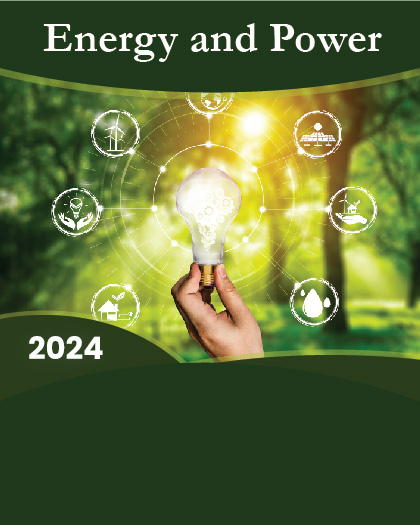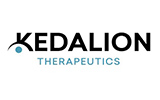CHAPTER 1:INTRODUCTION
1.1.Report description
1.2.Key benefits for stakeholders
1.3.Key market segments
1.4.Research methodology
1.4.1.Secondary research
1.4.2.Primary research
1.5.Analyst tools and models
CHAPTER 2:EXECUTIVE SUMMARY
2.1.Key findings of the study
2.2.CXO perspective
CHAPTER 3:MARKET OVERVIEW
3.1.Market definition and scope
3.2.Key findings
3.2.1.Top investment pockets
3.3.Porter's five forces analysis
3.4.Market dynamics
3.4.1.Drivers
3.4.1.1.High adoption in the residential sector
3.4.1.2.Contribution of heat pump technology in reducing CO2 emission
3.4.2.Restraints
3.4.2.1.High costs associated with heat pumps
3.4.3.Opportunity
3.4.3.1.Increase in popularity of geothermal heat pump technology
3.5.Parent Peer Market Overview
3.6.Patent analysis (2015-2018)
3.6.1.Patent analysis by country
3.6.2.Patent analysis by applicant (2015-2018)
3.7.Impact of government rules and regulations
3.7.1.Global Warming Solutions Act -2008
CHAPTER 4:HEAT PUMP MARKET, BY TYPE
4.1.Overview
4.1.1.Market size and forecast
4.2.Air-to-air
4.2.1.Key market trends, growth factors, and opportunities
4.2.2.Market size and forecast, by region
4.2.3.Market share analysis, by country
4.3.Water source
4.3.1.Key market trends, growth factors, and opportunities
4.3.2.Market size and forecast, by region
4.3.3.Market share analysis, by country
4.4.Geothermal
4.4.1.Key market trends, growth factors, and opportunities
4.4.2.Market size and forecast, by region
4.4.3.Market share analysis, by country
CHAPTER 5:HEAT PUMP MARKET, BY APPLICATION
5.1.Overview
5.1.1.Market size and forecast
5.2.Residential
5.2.1.Key market trends, growth factors, and opportunities
5.2.2.Market size and forecast, by region
5.2.3.Market share analysis, by country
5.3.Commercial
5.3.1.Key market trends, growth factors, and opportunities
5.3.2.Market size and forecast, by region
5.3.3.Market share analysis, by country
5.4.Industrial
5.4.1.Key market trends, growth factors, and opportunities
5.4.2.Market size and forecast, by region
5.4.3.Market share analysis, by country
CHAPTER 6:HEAT PUMP MARKET, BY REGION
6.1.Overview
6.1.1.Market size and forecast, by region
6.2.North America
6.2.1.Key market trends, growth factors, and opportunities
6.2.2.Market size and forecast, by type
6.2.3.Market size and forecast, by application
6.2.4.Market size and forecast by country
6.2.5.U.S.
6.2.5.1.Market size and forecast, by type
6.2.5.2.Market size and forecast, by application
6.2.6.Canada
6.2.6.1.Market size and forecast, by type
6.2.6.2.Market size and forecast, by application
6.2.7.Mexico
6.2.7.1.Market size and forecast, by type
6.2.7.2.Market size and forecast, by application
6.3.Europe
6.3.1.Key market trends, growth factors, and opportunities
6.3.2.Market size and forecast, by type
6.3.3.Market size and forecast, by application
6.3.4.Market size and forecast by country
6.3.5.Germany
6.3.5.1.Market size and forecast, by type
6.3.5.2.Market size and forecast, by application
6.3.6.France
6.3.6.1.Market size and forecast, by type
6.3.6.2.Market size and forecast, by application
6.3.7.Italy
6.3.7.1.Market size and forecast, by type
6.3.7.2.Market size and forecast, by application
6.3.8.Spain
6.3.8.1.Market size and forecast, by type
6.3.8.2.Market size and forecast, by application
6.3.9.UK
6.3.9.1.Market size and forecast, by type
6.3.9.2.Market size and forecast, by application
6.3.10.Rest of Europe
6.3.10.1.Market size and forecast, by type
6.3.10.2.Market size and forecast, by application
6.4.Asia-Pacific
6.4.1.Asia-Pacific was the largest market for heat pump technology in 2018 and it is expected to exhibit the highest CAGR of 8.1% during the forecast period. Countries covered in this region include China, India, Japan, South Korea, Australia, and others. Among all, China, Japan, and India are the major revenue generating countries in 2018.Key market trends, growth factors, and opportunities
6.4.2.Market size and forecast, by type
6.4.3.Market size and forecast, by application
6.4.4.Market size and forecast by country
6.4.5.China
6.4.5.1.Market size and forecast, by type
6.4.5.2.Market size and forecast, by application
6.4.6.Japan
6.4.6.1.Market size and forecast, by type
6.4.6.2.Market size and forecast, by application
6.4.7.India
6.4.7.1.Market size and forecast, by type
6.4.7.2.Market size and forecast, by application
6.4.8.South Korea
6.4.8.1.Market size and forecast, by type
6.4.8.2.Market size and forecast, by application
6.4.9.Australia
6.4.9.1.Market size and forecast, by type
6.4.9.2.Market size and forecast, by application
6.4.10.Rest of Asia-Pacific
6.4.10.1.Market size and forecast, by type
6.4.10.2.Market size and forecast, by application
6.5.LAMEA
6.5.1.Key market trends, growth factors, and opportunities
6.5.2.Market size and forecast, by type
6.5.3.Market size and forecast, by application
6.5.4.Market size and forecast, by country
6.5.5.Brazil
6.5.5.1.Market size and forecast, by type
6.5.5.2.Market size and forecast, by application
6.5.6.Saudi Arabia
6.5.6.1.Market size and forecast, by type
6.5.6.2.Market size and forecast, by application
6.5.7.South Africa
6.5.7.1.Market size and forecast, by type
6.5.7.2.Market size and forecast, by application
6.5.8.Rest of LAMEA
6.5.8.1.Market size and forecast, by type
6.5.8.2.Market size and forecast, by application
CHAPTER 7:COMPETITIVE LANDSCAPE
7.1.INTRODUCTION
7.1.1.MARKET PLAYER POSITIONING, 2018
7.2.TOP WINNING STRATEGIES
7.2.1.Top winning strategies, by year
7.2.2.Top winning strategies, by development
7.2.3.Top winning strategies, by company
7.3.PRODUCT MAPPING OF TOP 10 PLAYER
7.4.COMPETITIVE HEATMAP
7.5.KEY DEVELOPMENTS
7.5.1.New product launches
7.5.2.Agreement
7.5.3.Acquisition
7.5.4.Joint Venture
7.5.5.Partnership
CHAPTER 8:COMPANY PROFILES:
8.1.Daikin Industries, Ltd.
8.1.1.Company overview
8.1.2.Company snapshot
8.1.3.Operating business segments
8.1.4.Product portfolio
8.1.5.Business performance
8.2.Glen Dimplex Group
8.2.1.Company overview
8.2.2.Company snapshot
8.2.3.Product portfolio
8.3.Ingersoll Rand, Plc.
8.3.1.Company overview
8.3.2.Company snapshot
8.3.3.Operating business segments
8.3.4.Product portfolio
8.3.5.Business performance
8.4.Melrose Industries PLC.
8.4.1.Company overview
8.4.2.Company snapshot
8.4.3.Operating business segments
8.4.4.Product portfolio
8.4.5.Business performance
8.4.6.Key strategic moves and developments
8.5.Mitsubishi Electric Corporation
8.5.1.Company overview
8.5.2.Company snapshot
8.5.3.Operating business segments
8.5.4.Product portfolio
8.5.5.Business performance
8.5.6.Key strategic moves and developments
8.6.NIBE Industrier AB
8.6.1.Company overview
8.6.2.Company snapshot
8.6.3.Operating business segments
8.6.4.Product portfolio
8.6.5.Business performance
8.6.6.Key strategic moves and developments
8.7.Panasonic Corporation
8.7.1.Company overview
8.7.2.Company snapshot
8.7.3.Operating business segments
8.7.4.Product portfolio
8.7.5.Business performance
8.8.Stiebel Eltron
8.8.1.Company overview
8.8.2.Company snapshot
8.8.3.Product portfolio
8.8.4.Key strategic moves and developments
8.9.Vaillant Group
8.9.1.Company overview
8.9.2.Company snapshot
8.9.3.Product portfolio
8.9.4.Key strategic moves and developments
8.10.Viessmann Werke GmbH & Co. KG
8.10.1.Company overview
8.10.2.Company snapshot
8.10.3.Product portfolio
8.10.4.Key strategic moves and developments























